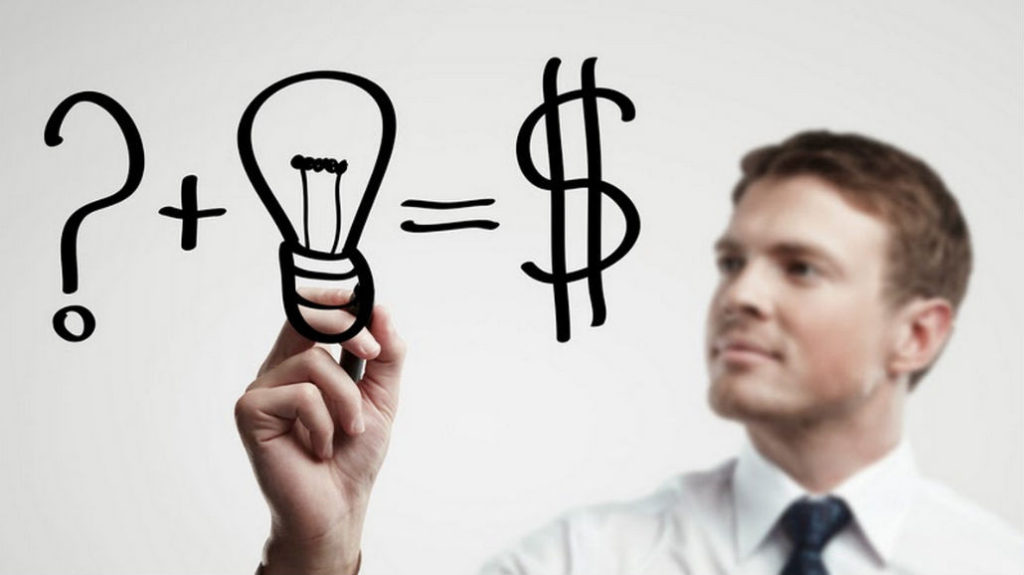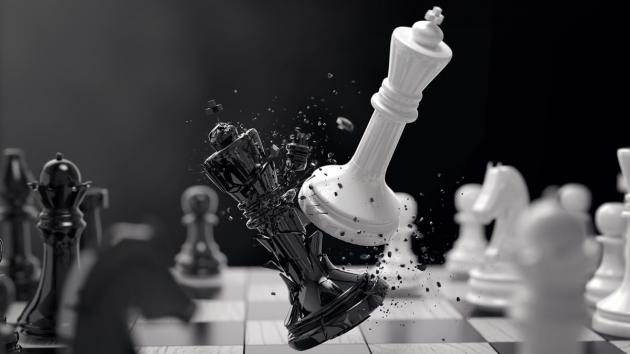I would like you to think about any company that at this moment and that has about 10 to 15 years old. Now imagine that we ask the CEO or Manager if in this company they do R + D + i (research, development and innovation). Suppose that this person says no, that he does not know exactly what that is. Although he listens to it on television, the radio and sees it in specialized magazines and that seems the remedy to all the problems of our economy. But he recognizes that he does not know what it is and, therefore, that he does not, at least consciously. In this context, would you believe the words of the CEO or manager of the company? If the answer is yes, I invite you to think about the following question: do you believe that this company, which has survived the last 10 years in a market economy, has done it by always doing the same things, in the same way, selling to the same clients and without making changes since you opened your business? It seems sensible to think that this is not the case. And this is not the case because, as Jack Welch wrote, "if the rate of change of a company is lower than that of its environment, the end of the company is in sight ... we only need to know when that end will be".
Strategy and innovation can help consolidate a company and contribute to its success. In an increasingly turbulent, global and competitive environment (VUCA), it is no longer enough to have a good idea, capitalize on a market opportunity and try to maximize short-term benefits. Opportunistic businesses have become enduring organizations, well structured with a direction and meaning, beyond generating short-term economic benefits to their owners.
STRATEGIC PLANNING
The essence of the strategy lies in deciding what is not going to be done. A strategic position is not sustainable if others are not abandoned. To put it simply, to have more than one thing it is necessary to have less than others. But wanting to have both in the organization can lead to significant inefficiencies. You have to decide to be everything for someone, because if not, we will be nothing for everyone. In the markets we must be different, but never indifferent.
In the environment of uncertainty and current complexity, some of the questions that every organization is asked are: is it worth planning, does it make sense to continue implementing the plans in such a changing environment? Can we be predictable and proactive? What is the appropriate time dimension?
In these VUCA environments, as we have seen in the previous article and certain aspects of geo-strategy, we are asked some questions: how to plan in these conditions? How useful is it to be supported in the pre-established plans? What is the point of complying with what planned ?, What is the validity of the plans finally elaborated ?, What should we plan long-term and in what is much more useful to be short-term ?, In what aspects should we be alert to not defocus and in what others should we practice? the total flexibility?
In making decisions it is very difficult to define what is a wrong decision. We could say that it is wrong when the result is not what was expected. But you have to understand that when a decision is made, it is taken at a certain time, in an environment, with information, and sometimes, when the result arrives, a series of events may have occurred, absolutely impossible to predict. When a company makes a decision, even if that decision can be considered wrong, it always contains a learning, yes, always. When he does not take it, besides there is no learning, someone ends up taking it for her. Who? Your customers and competitors. The market is sure to continue making decisions, so it is better for me to make my decisions before someone else does it for me. In the end, either you invent your future or someone will invent it for you.
In this environment currently in vogue and we call VUCA (volatily, uncertainty, complexity, and ambiguity), a concept that has become business, it is very difficult to have all the information to make decisions. If we wait to have all the information, it will be too late. We have to find a balance between the speed of decision making and, of course, the success, what is called "uncertain knowledge, right decisions". But it's not easy, because in the world of business and strategy, unlike other worlds, you do not play alone. You can make your strategic decisions, but every time you do it, the market responds and acts, there is always action-reaction, and this forces us to be permanently in motion.

STRATEGIC DECISIONS
What is intended to achieve with strategic planning are the following objectives:
Define the direction in the medium / long term. Establish the desired positioning, that is, to which market we want to go and how we want to be perceived.
Make a diagnosis of the market and new trends that place the organization in a realistic and challenging starting point: high competition and market instability require a sense of smell, radical innovation and agile responses. The speed of decision making is a competitive advantage of great value. On many occasions, anticipation will give us that competitive advantage.
Mutual adjustment between company and environment. Adapt the organization to new challenges and challenges. Know with whom we are going to compete. Our main competitors will come from other industries.
Identify new business trends and learn from the innovation of other sectors through the analysis of practical cases. The strategic prospective will be very useful.
Identify, generate and prioritize new business opportunities. In the well-known SWOT analysis, the four quadrants must be managed, but an organization should focus especially when relating its strengths (F) with opportunities (O). The growth and the future of the organization are at this junction. The quadrants of weaknesses (D) and threats (A), of course, must be managed, but they are defensive quadrants.
Identify and strengthen the new necessary competencies. In a new environment, he will deal with new talents.
Make the company more competitive in a sustainable way. Look for differentiation. If an organization considers that differentiation is costly, it values the cost of not differentiating. In order to get "market share" we should previously get the "mind quota".
Identify and manage risks. Have a risk map as a tool for control and forecasting. On many occasions, organizations begin their decline before the economic results say so. In this sense, economic results tell us about the past, and in order to "foresee" the future we will need to be alert with other indicators.
The future of an organization depends much more on its own decisions than on the environment.

INNOVATION
There are a number of beliefs when talking about innovation, although they are not wrong, they are biased. We tend to believe that innovation is doing different things, that it is only generated through technology and in products and that only large companies can innovate. Of course, doing different things is to innovate, and of course innovation in technology and product is innovation. But in the end, in most cases, innovation is not doing different things, but doing the same thing in a different way and that the most radical innovations are produced in business models, which is within the reach of any company, and Many times it does not cost money.
It is convenient that the management teams are aware of the need for their organizations to constantly question what they are, because, deep down, everyone is questioning it: our clients question each day what it is we are doing, what same as our competitors. Innovating in technology and product gives us a competitive advantage, but only for a very short time, although it is essential, because it allows us to continue being in the market. However, innovations in business models are those that can guarantee us the future and are much harder to copy. In this sense, when talking about innovation it is also important to remember that "innovation without execution is an hallucination".
Innovation must be focused on the customer, and, therefore, the key question is this: what is the customer buying us? What a company sells and what they buy are usually two totally different things. We have to innovate in what we are selling, but, fundamentally, we must innovate in what they buy from you.
Innovation must have a meaning and an objective, and, of course, we must reach its implementation, because if it does not become an improvement of our organization, it really does not contribute anything.
Innovation is not divine inspiration, it is a culture. Companies bet or not for innovation, and innovation is always corporate tension between business and current and future products, between the present and the future of our organization, so we should differentiate between companies that do innovation and innovative companies. The virtuous cycle of innovation pointed out by Marcos Urarte in his book "Forjadores de leaders" is represented as follows:
In order to innovate, companies have to create a non-conformist environment (EInc), and when it is achieved, they end up having people who comply with another formula. This formula is called InC2O: to be able to innovate you have to have initiative; the "C" is curiosity and creativity and the "O" is an observer. Those people, in that culture, will end up having ideas (Id), and some may be implemented immediately and others more complex will enter a process of R & D, whose goal will be to end in innovation, but implemented, that's why i2. This is why the most innovative companies in the world have this culture, and for many years they have left their professionals free time so they can dedicate it to creating ideas linked to the business, such as Google or 3M. They are ideas that do not come from the top of the organization, but that arise from any level. If people are subjected to certain rigidities, they will hardly be able to think about anything else, so it is necessary to give them freedom, and above all they must be given the ability to make mistakes without punishing the error. If you punish the error, people will assume the least possible risk, and to innovate you have to take risks.
THE FORMULA OF COMPETITIVENESS
The great objective of a company is competitiveness. Productivity is a very important factor, but not enough. The productivity is the internal look of the company, but the fundamental thing, where companies play their lives, is the external look; that is, when the market compares us with our competitors and decides who to buy. Unfortunately, many organizations are only focused on productivity and cost reduction, and end up being "anorexic", unable to compete.
Competitiveness is much more than operational efficiency (good product, adequate price and effective distribution). Competitiveness is the result of the sum of two variables, "operational efficiency" and "perceived differentiation", the image that is transmitted, that is, the perceived positioning.
Another crucial question that every company must ask is whether it is product or customer oriented. To this question, initially, most companies would answer the customer, but the reality is that they are product oriented. Therefore, it is important to bear in mind that this issue absolutely conditions the future of the organization and its strategic decisions.

There are a number of factors that intervene in competitiveness in all organizations. We could say that "the recipe" is unique, but what changes radically is the specific weight, the weighting of each one of them. Every company must define the balance it wants to achieve, since, without this definition, it will be extremely difficult to align all decisions with the intended objectives. In a first approximation, the formula described below is defined: P5IC2
Depending on the sector analyzed, we may have to consider other factors, but what is certain is that those described here will have to be managed:
Productivity. It is very important, but not enough. Of course, the higher the productivity of our company, the greater the competitiveness. In this factor, companies have made great progress, and getting differences is increasingly difficult.
Price. One of the possible strategies is to compete on price, but, reflecting on this, we appreciate that only the company with the lowest costs can compete in price in a sustainable way over time. That is, to consider a price strategy, the factor that we will have to manage is not the price, but the cost. This reflection will force us to eliminate a "P" and replace it with a "C".
Positioning. Image, brand and reputation make up the most relevant aspects of the positioning of an organization and are the main factors of competitiveness, since they significantly affect others. In some of the most successful organizations in the market, this factor is more valuable than the rest of assets.
People. Our professionals, the talent of our organization, are a factor of vital importance for the success of our company. Talent calls talent.
Country. The competitiveness of the country or the region is a facilitating or impeding element for the competitiveness of its companies. We refer to infrastructures (roads, air, communications, etc.), education (universities, vocational training, business schools, languages, etc.), R & D policies, financing, technological clusters, etc.
Innovation. Nobody doubts the importance of this factor in the competitiveness of an organization, of which we have spoken before, but it is important to highlight this:
a) It is not an option: innovate or disappear.
b) It is not only R & D.
c) You can innovate in all areas of the company.
d) It is within the reach of any organization, regardless of size.
e) The most radical innovations are in the business models.
Disruptive innovation is not changing the answers, but changing the question.
Quality. Every organization must manage, at least, three types of quality: real or technical, perceived and sufficient. If a company only manages one of them, it will be making huge mistakes: or we will defraud the expectations created.
Culture. The culture of the company, that is, how we orientate ourselves to the client, service vocation, cohesion and internal alignment, values, etc., will absolutely condition our competitiveness. Culture is not what we say, but how we behave. It is not our defined values, but our habits. And it is usually one of the worst managed factors.
Due to the change of the "P" price for the "C" cost, the formula would be as follows: (P4IC3) C
And a new "C" appears outside the parentheses, which is that of reliability and credibility; that is, in addition to managing all these factors, we must be credible, the market must rely on our value proposition. The value proposition is the promise that a company makes to the market, and that is what it can not fail. Companies do not compete, but their value propositions, and each of them must be supported in different business models.
"The future is not what is going to happen, it is what we are going to do", José Luis Borges
DO YOU WANT TO MAKE A COMMENT ON IT?
